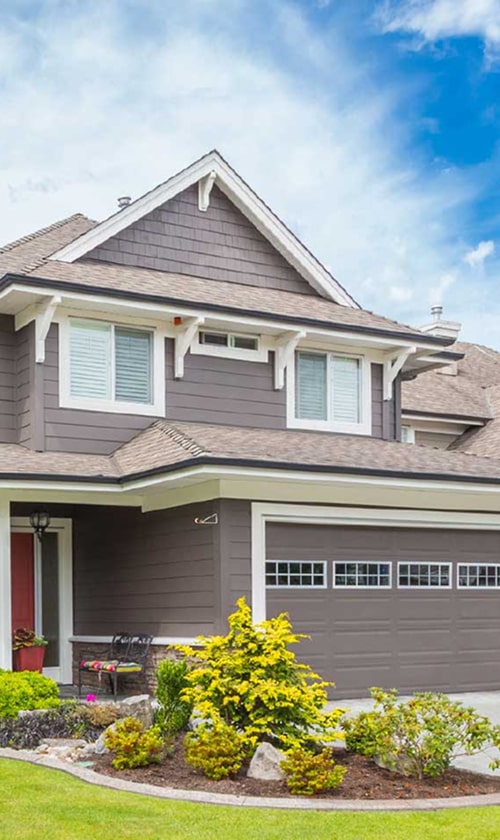Installing a thermostat may look simple, but small mistakes can lead to big problems with heating and cooling. We can avoid wasted energy, high bills, and discomfort by knowing the most common thermostat installation errors. Many of us want our homes to stay comfortable and efficient, which starts with getting the basics right. If we understand what to watch out for, we set ourselves up for fewer headaches and better results.
Let’s look at the most frequent mistakes people make during thermostat installation and learn how to prevent them.
Fundamental Mistakes in Thermostat Installation

Thermostat installation might seem easy, but it’s simple to overlook key steps. We need to focus on safety, choosing the correct devices, and keeping careful track of wiring and compatibility to avoid costly errors.
Improper Power Shutdown and Safety Precautions
We must always cut off electrical power to the thermostat and HVAC system before starting any work. Skipping this step can lead to electric shock or short circuits. Turning off the circuit breaker is necessary, not just switching off the thermostat.
Using insulated tools and wearing gloves adds another layer of safety. If wires are still live, we put ourselves and the HVAC equipment at serious risk. Sometimes, a licensed HVAC technician is needed if we are unsure about the wiring or breaker.
Remember, safety rules are not optional. Always check wires for current with a voltage tester before moving forward with installation or repair.
Incorrect Matching of Thermostat Type and HVAC System
Choosing the wrong type of thermostat for our HVAC system can make the device useless. For example, a heat pump often needs a different thermostat than a standard furnace or central air conditioner. Not all thermostats work with multi-stage systems or high-voltage setups.
Programmable thermostats and smart thermostats each have their own compatibility needs. A mismatch can lead to heating or cooling problems, or damage to the HVAC components.
Checking the manufacturer’s guide or label helps us avoid buying or installing the wrong type of thermostat. When in doubt, we should ask an HVAC technician for help in choosing the right model for our system.
Neglecting to Document Existing Thermostat Wiring
Before disconnecting any wires, it is crucial to make a record of the current wiring configuration. We can take a clear photo, jot down notes, or use tape to label wires. Skipping this can result in confusion or contact with the wrong terminals.
Thermostat wiring usually involves connections labeled R, W, Y, G, and maybe others. If we forget where a wire goes, the HVAC system may malfunction or not turn on.
Documenting how wires were attached helps us finish the job correctly and makes troubleshooting easier if something goes wrong. Missing this step is one of the most common, but easily avoided, installation errors.
Skipping Compatibility Checks for Smart and Programmable Models
Not every smart thermostat or programmable thermostat will work with every HVAC system. Some demand a C-wire (common wire) for power or have voltage requirements that older systems do not meet. Missing a compatibility check might leave us with a device that will not power up or control the system properly.
It’s important to look up both our system and the thermostat’s installation manual. Many manufacturers offer lists or online tools for checking compatibility. A proper check beforehand saves us time and stops frustration during setup.
When unsure, contacting the thermostat supplier or an HVAC technician gives us expert advice and can prevent unnecessary returns or system failures.
Wiring Errors and Connection Issues

Wiring mistakes can cause thermostats to malfunction or damage HVAC equipment. Correct identification and placement of wires is important, along with proper securing and insulation.
Mislabeling or Mixing Up Thermostat Wires
We often find that one of the most common problems during thermostat installation is mixing up wire labels or connections. Many thermostat wires are color-coded, but older homes or previous repairs can cause these colors to be unreliable.
It’s important that we always look at the terminal labels (like R, W, Y, G, C) instead of relying on just colors. Using a sticker or labeling kit helps us match each wire to the correct terminal. Writing down each wire’s original terminal before disconnecting anything is smart.
Mistaking the Y (cooling) wire for the W (heating) wire or connecting the C (common) wire incorrectly can cause the HVAC system to fail or not power up the new thermostat at all.
Incorrect G Terminal or Auxiliary Heat Connections
The G terminal is for the fan, while the Auxiliary Heat wire is for heat pumps that need extra heat when it’s very cold out. Mixing these up can stop the fan or aux heat from working when needed.
For heat pump thermostats, it’s key that we find the correct Aux or E terminals for backup heat sources. If the G terminal is miswired, only heating or cooling may work, but not both. Some systems use a jumper between wires, and getting this wrong can create short circuits or cause the system to run non-stop.
Double-checking wiring diagrams and installer manuals before making these connections is essential because one wrong connection can make the thermostat or the HVAC system not work as it should.
Failure to Secure or Insulate Wires Properly
Loose or exposed wires are a safety risk and can lead to short circuits. If thermostat wires are not fully inserted into their terminals and tightened, they may slip out and lose connection. This causes the thermostat to lose power or send bad signals to the HVAC system.
We should also make sure no copper or metal is exposed outside the terminal block. Using electrical tape or small wire nuts to insulate cut or unused wires is good practice. Unprotected wires touching each other or the wall can make the system act unpredictably or blow out a fuse.
A summary checklist can help:
- Insert wires fully
- Tighten screw terminals
- Trim and insulate exposed wire ends
- Keep unused wires separated and capped
Doing these steps helps prevent shorts, lost connections, and keeps our installation safe.
Placement and Environmental Errors
Where we put our thermostat has a big effect on how well our HVAC system works. Mistakes in placement or ignoring the area around the thermostat can lead to poor temperature readings and uneven heating or cooling.
Installing in Direct Sunlight or Near Heat Sources
We should never install a thermostat in direct sunlight or too close to a heat source. Sunlight can make the thermostat sense higher temperatures, even if the rest of the room is cooler. The same thing happens if we put it above a lamp, TV, or other electronics that give off heat.
Common heat sources to avoid:
- Radiators or baseboard heaters
- Ovens and stoves
- Computers and large appliances
- Windows with strong sunlight
When the thermostat senses extra heat, it may run the air conditioning more than needed or fail to activate our heater when it should. This mistake can waste energy and make our home feel less comfortable.
Placing Thermostat Near Drafts or Exterior Doors
A thermostat near a drafty window, vent, or frequently used exterior door does not give an accurate reading. Cold air from outside or drafts from an air handler vent can make the thermostat think the whole house is colder (or warmer) than it really is.
As a result, the HVAC system may run too often or not enough. This leads to uneven temperatures and higher utility bills.
Locations to avoid:
- Above or near supply vents
- On exterior walls
- Close to windows or entryways
When possible, we should install the thermostat in an interior hallway away from drafts or outside air.
Ignoring Wall Cavities Behind the Thermostat
We sometimes overlook what’s happening inside the wall behind our thermostat. A wall cavity, especially one that’s not sealed or insulated, can allow air from an attic or crawl space to reach the back of the thermostat.
If that happens, the sensor may get false temperature readings. For example, if the wall behind it is very cold, the thermostat will think the room is too cold, turning on the heater when we don’t need it.
To avoid this, we seal gaps or holes behind the thermostat with caulk or foam. This helps ensure the thermostat only senses the room air not air from inside the wall. Consistent readings make the HVAC system work as intended.
Long-Term Performance and Efficiency Concerns
Thermostat installation does not end once the device is on the wall. Our daily actions affect how well our thermostat controls temperature and impacts our energy bills over time.
Overlooking Regular Maintenance and Cleaning
A thermostat needs proper care to last and work well. Dust can gather inside the device and on the temperature sensor, leading to false readings. This means our air conditioner or heater might run longer than needed, raising our energy bills.
We should use a soft brush or a dry cloth to gently clean the thermostat every few months. It’s also helpful to check the batteries at least once a year if our device uses them. If the screen is hard to read or the thermostat does not respond, the batteries may be weak. Keeping the area around the thermostat clear from heat sources, lamps, or electronics is important, too. Extra heat can trick the sensor and cause our system to turn on or off at the wrong time.
Misusing Programmable or Smart Thermostat Features
Programmable and smart thermostats offer many settings to save energy if we use them right. Leaving the programming on a constant temperature all day is a common mistake. This can stop us from saving money on our energy bills.
To get the most out of these devices, we should set up a schedule that matches our routine:
- Lower the temperature when we’re asleep or away.
- Raise it before we get home.
Smart thermostats may also have learning or geofencing features. These can pick up on our habits and adjust temperatures for us if we take the time to set them up. If we never use the app or voice controls, we’re not getting full value from our investment. We should also watch out for software updates since missing them can cause problems or limit efficiency.
Not Consulting an HVAC Technician When Needed
Trying to solve all thermostat problems alone can make things worse. Sometimes, when our heating or cooling system is not working right, the cause is not the thermostat but the HVAC unit itself.
If our thermostat keeps losing settings, does not turn on the system, or the temperature is always off, a professional should check it. An HVAC technician has tools and training to test both the thermostat and the whole system. Fixing wiring mistakes or updating system settings is not always simple. If we guess, we risk damaging costly equipment.
Calling an expert may cost money, but it can protect us from bigger breakdowns and high energy bills in the future. If our programmable or smart thermostat does not seem to connect or work as expected, checking with a technician ensures proper setup and keeps our equipment running as it should.




